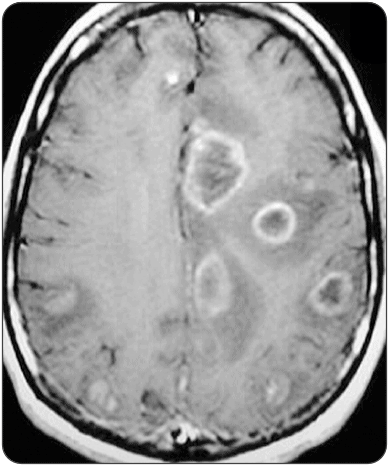Podcast Ep 49: Poison Ivy, tPA, Cyanide Poisoning, & More

Life is like riding a bicycle. To keep your balance, you must keep moving.
–Albert Einstein
Welcome back to RoshCast for Episode 49! We have a lot of exciting material in this episode. Definitely don’t skip this one! For those taking the initial certification exam, it’s just around the corner. Go back and listen to old episodes and review.
Question 1
A 14-year-old boy developed an itchy, painful, erythematous rash on his hands, forearms, and face about a day after hiking in nearby woods with some friends. Your exam shows linear erythematous papules over his forearms with similar swelling and erythema around his eyes (including eyelids), cheeks, and forehead. You suspect poison ivy that he reports he has had in the past. Which of the following is most likely to improve the course of his illness?
A. Oral diphenhydramine every six hours
B. Three-week prednisone taper
C. Topical 1% hydrocortisone three times daily
D. Topical calamine lotion twice daily
Question 2
Which of the following patients will benefit most from receiving tissue plasminogen activator for acute pulmonary embolism detected in the emergency department?
A. 55-year-old man with a history of hypertension with vital signs showing HR 100/min, BP 80/40 mm Hg, R 24/min, and oxygen saturation 92%
B. 55-year-old man with a history of hypertension with vital signs showing HR 145 bpm, BP 136/86 mm Hg, R 24/min, and oxygen saturation 92%
C. 55-year-old woman with a history of hypertension and systemic lupus erythematosus with vital signs showing HR 100 bpm, BP 116/86 mm Hg, R 24/min, and oxygen saturation 85%
D. 55-year-old woman with a history of hypertension with vital signs showing HR 110 bpm, BP 122/80 mm Hg, R 24/min, and oxygen saturation 92% with evidence of right ventricular dysfunction on echocardiogram
Question 3
A 55-year-old woman presents to the emergency department unresponsive. She and her friend had finished eating 60 minutes earlier when the patient collapsed to the floor while talking. Which of the following foods is most likely the cause?
A. Apricot kernels
B. Fava beans
C. Peanuts
D. Poppy seeds
Question 4
Which of the following is due to the intense thermal radiation seen in lightning strikes?
A. Cataract formation
B. Hypertension and tachycardia
C. Mydriasis
D. Tympanic membrane rupture
Question 5
A 32-year-old woman with no past medical history presents to the emergency department with a four-day history of bloody diarrhea and abdominal cramping. She states that her boyfriend is having similar symptoms but did not want to come to the hospital. Their symptoms started two days after they shared a meal at their favorite fried chicken restaurant. The patient’s vital signs are 37.4℃, HR 89/min, BP 112/70 mm Hg, RR 17/min. Physical examination is significant for moist mucus membranes with brisk capillary refill and mild diffuse tenderness to palpation of the abdomen. Which of the following is the most appropriate management of this patient’s illness?
A. Admit for IV azithromycin and rehydration
B. Admit for IV rehydration and observation for resolution of diarrhea
C. Discharge home with ciprofloxacin
D. Discharge home with metronidazole
Question 6

A 54-year-old man with a history of HIV and recent CD4 count of 85 presents with headache for 3 days. The patient’s sister says that he has been increasingly confused over the last 3 days. While in the emergency department, he has a seizure which resolves spontaneously. Electrolytes are within normal limits. A CT scan is performed and is shown above. Which of the following medication regimens should be given?
A. Amphotericin B
B. Ganciclovir and foscarnet
C. Pyrimethamine, sulfadiazine, and leucovorin
D. Trimethoprim-sulfamethoxazole

- Localized reaction from poison ivy can be treated with topical high-potency corticosteroids. Extensive reactions or reactions involving the face or genitalia need a 2–3-week course of tapering systemic steroids.
- Persistent hypotension or shock due to acute pulmonary embolism is the only widely accepted indication for systemic thrombolysis.
- Severe metabolic acidosis is a hallmark feature of cyanide poisoning and treatment is with hydroxycobalamin.
- Lightning strikes cause injuries via both acute thermal radiation and widespread electrical damage. Intense thermal radiation can cause tympanic membrane perforation.
- Undercooked poultry is associated with infection from Campylobacter jejuni. This can present with bloody diarrhea, abdominal cramping, and vomiting. Treatment is with fluoroquinolones or azithromycin.
- Subcortical, ring-enhancing lesions on a CT of the brain in an HIV patient with a CD4 < 100 is indicative of toxoplasmosis and treatment is with pyrimethamine, sulfadiazine, and leucovorin.
- CNS lymphoma also causes ring-enhancing lesions in patients with AIDS but lesions in this case are usually solitary and located in the periventricular white matter. Symptoms are usually gradually progressive over months rather than days.
That wraps up RoshCast Episode 49! Be sure to also check out the rest of the Rosh Review Blog for questions from prior episodes, related images and tables, as well as bonus teaching points. There are also tons of other great free resources to help prepare you for the boards and the wards. Don’t forget to follow us on twitter @RoshCast. And you can always email us at RoshCast@RoshReview.com with any feedback, corrections, or suggestions.
You can also help us pick questions by identifying ones you would like us to review. Write “RoshCast” in the submit feedback box as you go through the question bank. Lastly, if you have a minute, make sure to rate us and leave comments on iTunes to help spread the word about RoshCast.
Megha and Nachi
Get Free Access and Join Thousands of Happy Learners
You must be logged in to post a comment.





Comments (0)